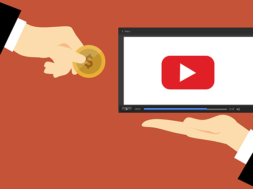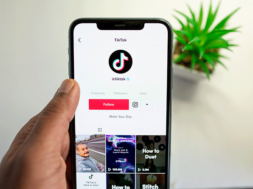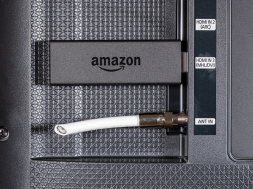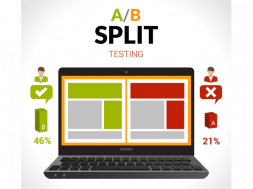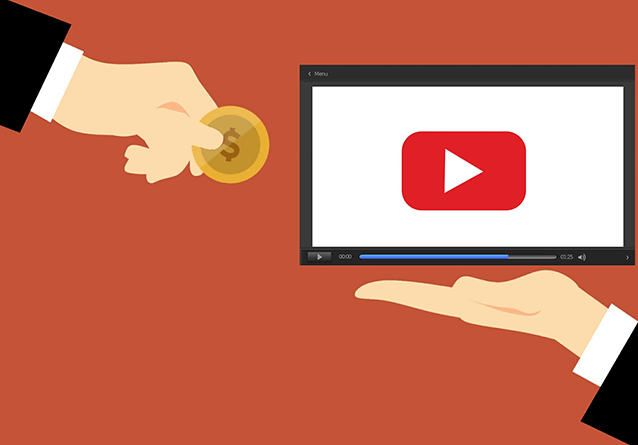
By Lora Polich, Associate Director of Awareness Media, EducationDynamics
As higher education institutions reexamine their marketing plans for the upcoming year and beyond, many eyes are turning to Over-the-Top, or OTT, advertising.
This up-and-coming channel is a powerful way to reach potential students, or at least, to put advertising messages in front of digitally savvy users under the age of 30.
The news about OTT is promising. But, before you jump headfirst into the OTT pool, it pays to know what this channel is, what role it might play in your marketing strategy, and a few best practices for successfully adding OTT into your marketing mix.
What is OTT
OTT is any streaming media offered over the internet. It stands for “over-the-top,” as in, this service is delivered beyond your traditional cable or satellite set-top box. Users can access OTT platforms anywhere they have an internet connection and on many connected devices. The term OTT is most commonly applied to video-on-demand platforms, like Netflix, Hulu or Apple TV. It can also refer to audio streaming, messaging services, or internet-based voice calling solutions like Spotify and Pandora. Although video is the most common form of OTT advertising, audio-only ads and display ads may also appear on OTT platforms and devices and can be very effective.
Advertising on OTT platforms gives you greater access to your audience. You can now get your message to them anywhere they have the internet. For most of North America, that’s practically everywhere.
How OTT advertising works
Most OTT platforms rely on advertising for at least some of their revenue. Ad-supported video on demand, sometimes called AVOD, is supported exclusively by advertising. Think YouTube. Hybrid supported models require users to pay a subscription but also serve up ads. Some OTT platforms offer multiple tiers of service in which users pay a higher fee to move from a hybrid option to an ad-free model. Hulu is a good example of this tiered structure.
Not all OTT platforms accept advertising placements. In fact, Netflix is one of the leading OTT video services in North America and does not sell ad space. Although about 50% of the U.S. population uses this service, advertisers must seek out other channels to reach audiences.
When you buy advertising on OTT platforms, you can serve your ad in several different formats, including display, video, or audio. The metrics tracking and audience recognition capabilities of the digital format make OTT ads a robust marketing tool. It offers precise targeting and increased ad relevance, especially as compared to traditional television.
Why buy OTT ads now
Although OTT can take many forms, it reaches its widest audience with video. About 83% of consumers have access to at least one paid video streaming service. For years, the video entertainment and marketing industries have talked about cord-cutters, those people who have abandoned traditional cable and satellite TV packages in favor of OTT programming. Yet, until recently, most households added OTT without getting rid of their traditional television package. In 2018, more than 70% of homes using OTT also had a multichannel cable or satellite video package.
However, that trend seems to be changing as younger audiences mature into the market. About 61% of young adults, between the ages of 18 and 29 say streaming services are the primary way they watch TV.
OTT marketing for higher education
OTT offers powerful benefits for institutions of higher education. It expands your ability to retarget audiences because their viewing information becomes part of their digital footprint. It also helps you to reach audiences where they are, which is increasingly on their mobile phones. Millennials spend an average of 7.2 hours per day on their phones and spend more time watching video on their phones than on their televisions.
Aside from these general advantages, OTT brings some specific benefits that are especially useful for institutions of higher education.
- Geotargeting. Target audiences in specific areas or regions. Since most adult students prefer to attend schools within 50 miles of their home, you can use OTT to spend ad dollars where they’ll be most impactful.
- Dynamic creative. Serve ads based on interests if the platform supports such granular targeting. Many already do, and most OTT platforms are continuing to improve their targeting capabilities. You may be able to highlight different majors or support offerings based on audience interest.
- Self-selecting audience. Your online learning program is more likely to enroll students who are already comfortable in an online environment. OTT media is digital by definition. Those who use it most frequently are likely comfortable in this space, which may make them better candidates for online learning.
Why OTT? Why now?
Over the last decade, we’ve seen a growing shift toward cord-cutting, as more viewers choose streaming services over cable TV. More recently, many OTT channels have seen view times increase as people spend more time at home.
The TV landscape is changing. Live content once thought to be the last bulwark against the digital shift has now made the jump to digital, and consumers are turning to OTT and digital video services en masse. The proliferation of connected TVs in U.S. households has further accelerated this process, making it easier than ever for consumers to cut the cord and move from linear cable TV to subscription-based and ad-supported apps that allow them to watch when and how they please. In July, eMarketer estimated that 21.9 million U.S. households (17.3%) had cut the cord, and projected that percentage to increase to 31.8 million (25%) by 2022.
1. Know your audience: the OTT marketing advantage
Broadcast advertising relies on Nielsen or Comscore ratings to determine when and where to show their content. These services provide useful, but limited, data. For example, they might indicate that a particular show is popular among females aged 25-49. That’s a start, but we can go much deeper. The traditional form of TV measurement allows for measurement from a small group of people to be modeled across a broad demos. This doesn’t account for personal preferences and additional audience attributes to be considered when purchasing and measuring linear television.
OTT allows a much more robust targeting and measurement, accounting for individuals and household information.
We can directly target messages based on education level, areas of interest, and even determine what educational programs might be most attractive to a given user. It’s the same advanced targeting offered on search and social media campaigns, now applied to television and radio across the digital ecosystem.
Every smart TV that connects to the internet is assigned an IP address, or a numerical label used to identify the device. When multiple devices are connected to the same router, they form a network, and will appear to have the same IP address externally. As a result, we can identify when multiple devices are in the same household by looking at whether they have the same IP address. When we can match a smart TV to a series of desktop and mobile devices, we have essentially created a “digital household,” allowing us to target individuals across multiple devices.
When identifying your audience for OTT, go beyond baseline household information of age and gender demographics to draw a clear picture of your audience. This will help determine where you might want to advertise and what your content should look like while using the advantages of OTT.
2. Integrate marketing strategies and data
OTT should be integrated into your overall marketing strategy. For example, a potential student may see your ad on Hulu, but that shouldn’t be the end of the interaction. You can retarget those viewers or households by running display ads, search ads, and other content on mobile and desktop devices. Students live in a multi-screen world, and brands need to communicate accordingly. Data on show viewership, either a single show or multiple shows, can be used to build groups of consumers who fit a specific viewing pattern, and then that profile data can be expanded via lookalike modeling to build digital audiences that are also likely to share that profile. In this way, TV insights can be used as a type of planning tool to build more robust targeting segments. We even use this data to competitive conquest audiences that have seen a competitor’s commercial on their streaming service.
It is difficult to control reach and frequency with linear television, a challenge that frequently results in the same consumers seeing ads dozens of times while others may see an ad only once or not at all. Traditional television is unable to measure those individual exposures to manage the buy effectively. By identifying the consumers who saw a linear TV commercial, advertisers can look at targeting the unexposed or underexposed digitally, to drive incremental reach that cannot be done efficiently on TV screens.
Take the lessons you learn from OTT advertising and apply them to other digital advertising strategies. Do the same in the other direction. Create lookalike audiences based on CRM data. Refine your targeting and content based on all of the information, not just what the OTT channel shows you.
3. Set effective budgets
The instinct is often to say, “Here’s my budget, what can I get for this?” But setting the budget first can hobble your campaign. Without knowing how many impressions it buys you in the market, you won’t know whether your budget can achieve a positive result.
Start investigating the budget with an open mind. Find out how much it will cost to reach a certain percentage of the people who match your target audience in a specific area. Generally, it makes sense to aim for between 10 and 20 percent. Create a good, better, best scenario at different percentage points. Keep in mind that you’ll want to sustain a budget for at least three months to be able to see meaningful results. Driving efficient reach and frequency across your awareness campaign is key!
Allocating budget and choosing mediums is both an art and a science. Exclusion can help you measure the effectiveness of any marketing strategy. What happens when you stop using a particular platform or channel? If you see a dip in queries or enrollments, you know that channel is working. If not, it might be time to shift spending away from that platform and toward something else.
4. Assess, test, and iterate
Before starting any marketing campaign, you should know what your baseline is. Understand the results from your existing advertising so you can better gauge the effect of new strategies. Gather baseline metrics like click rate, conversion rate, impression levels, and site visits.
Check on those metrics after 30, 60, or 90 days running the new OTT campaign. What impacts are you seeing? Did your overall brand impressions increase? Dig deeper. If impressions stayed the same but conversions increased, OTT ads might be more effectively targeting your ideal audience.
Understand distribution models and how they might be affecting your metrics. Since OTT is an awareness model, first-touch and multi-point attribution models are most likely to capture the impact of this strategy.
Once you begin to understand how your audience responds, you can even use your OTT buys to inform your broadcast media purchases. The information you gather through OTT and other digital advertising can help you make more informed assumptions about broadcast audience behavior. You can shift your local broadcast buys and cable buys to match where your audience is going.
5. Building better campaigns
You need a plan for reaching cord cutters and cord trimmers. This audience is already too large to ignore, and it’s projected to grow substantially over the next five years. You need to have a plan for identifying and reaching the 21.9 million American households that don’t have access to linear TV.
Use Programmatic OTT as a way to reach cord cutters.
The best way to reach cord cutters is to hit them on the same screen, but through the content they’re using to replace linear TV.
Programmatic OTT is the perfect channel for this, offering massive reach and the ability to reach consumers on their TVs in a high-impact format with high completion rates. Partner with someone who can combine OTT and connected TV data to identify households that have cut linear TV out of their lives so you can identify and target those potential students.
Use Programmatic OTT to reach the under-served and supplement TV buys. Beyond reaching cord cutters, the inability to control frequency in traditional TV formats means that a small percentage of heavy viewers will end up seeing more than half of the ad impressions you pay for with a linear TV buy. By combining digital targeting capabilities with connected TV data, you can build campaigns that build sequentially on the messaging a consumer has seen, showing them a direct response if they’ve seen your ad dozens of times, or hitting them with a video ad if they haven’t seen your TV ad more than once or twice.
Personalized Content. The “one-size-fits-all” concept has become way too obsolete in an era of personalization where audiences are expecting relevant content to be catered to them. Employ personalization techniques like dynamic creative optimization, or interactive media to optimize the features on the ad creative that supports the campaign objectives and fits the correct messaging to the audience.
6. Watch the trends
Finally, pay attention to how outside influences may affect viewership. For example, this year is a hotly contested election. If your marketing plan calls for media buys during local television news you may run up against decreased ad space, as these slots are purchased by political interests. At the same time, the political climate may lead some viewers to actively avoid watching the news. Shifting advertising dollars to streaming services may help you reach audiences who have tuned out of the political debate. Don’t forget, you need a plan for reaching cord cutters and cord trimmers.
OTT is growing and now is the time to invest in discovering how these valuable platforms fit into your larger marketing strategy. While schools shouldn’t completely abandon their traditional marketing platforms and media buys, OTT can and should play a role in your awareness marketing efforts in 2021. Now that you know a bit more about OTT marketing, follow the best practices above to grow your brand with the right audiences.
LORA POLICH has been working in Awareness Marketing for over 16 years and has been working exclusively in postsecondary marketing for the past 8 years. During her tenure at EducationDynamics, she has worked with many institutions to develop and execute marketing plans to achieve and exceed goals. She has a proven track record of integrating into her client teams, and is aggressive in her approach for data-driven results.
Contact Information: Eric McGee // Director of Marketing & Corporate Communication // EducationDynamics, LLC // 803-760-5200 // emcgee@educationdynamics.com // educationdynamics.com // https://www.linkedin.com/company/educationdynamics // https://www.facebook.com/EducationDynamics/ // https://twitter.com/EdDynamics
